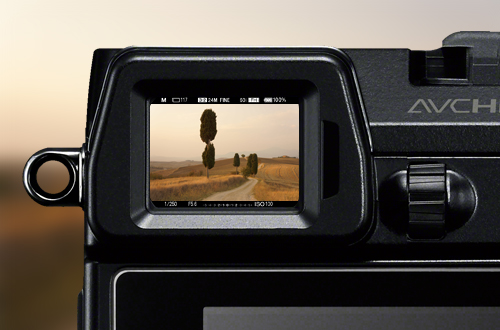http://www.dcresource.com/reviews/sony/nex7-review
Conclusion
The Sony Alpha NEX-7 is the flagship camera in Sony's mirrorless lineup, and it doesn't disappoint in the least. It has a fairly compact, exceptionally well-built body that's made of a magnesium alloy. The camera is easy to hold, thanks to a good-sized grip, and important controls are easy to reach. Speaking of controls, the NEX-7 uses Sony's new Tri-Navi interface, which involves three dials on the camera body (two on the top, one on the back). While it makes changing camera settings a lot easier than on previous NEX models, I think that it's actually a little too complicated now. The bottom line is that should definitely get your hands on the NEX-7 before you buy it. As with the other models in the NEX lineup, the NEX-7 supports Sony's new E-mount, and there's a growing selection of lenses available. The included kit lens is well-built and pretty solid optically. If you want to use an A-mount lens, you have two adapters to choose from, with the difference being AF speed and lens support. On the back of the camera are two very impressive displays: an articulating 3-inch LCD and a beautiful 0.5" OLED electronic viewfinder. Both of these are very sharp and offer good outdoor and low light visibility. The NEX-7 supports external flashes (via its proprietary hot shoe), a stereo microphone, and a wireless remote control.
Despite its premium price and enthusiast target audience, the NEX-7 still has plenty of features that will appeal to the point-and-shoot crowd. You've got your Intelligent Auto mode, face detection and recognition, plenty of scene modes, and fun sweep panorama features. The Anti Motion Blur and Handheld Twilight modes also do a great job of producing sharp photos in low light. Enthusiasts will enjoy full manual exposure controls, white balance fine-tuning, a very customizable interface, an electronic level, and a unique "peaking" function for manual focus. A feature I found particularly useful is HDR, which combines three exposures into one, for dramatically improved contrast. I used it many, many times with the NEX-7, and the results were impressive. The NEX-7 doesn't just take stills -- it can record Full HD movies, as well. The camera records at 1920 x 1080 at either 60i or 60p using the AVCHD codec, with stereo sound, continuous autofocus, and full manual controls.
Camera performance was excellent. The NEX-7 is ready to shoot in a little more than half a second. The NEX's contrast detect AF system is super fast in good light, and about average in low light (focus times will hover around the one second mark in those situations). Shot-to-shot delays are minimal, regardless of the image quality setting or whether you're using the flash. Given all of its multi-shot features (HDR, Anti Motion Blur, etc), it should come as no surprise that the NEX-7's burst mode is very nice. You can take 17 RAW or 28 JPEGs at 3.3 frames/second, with the camera refocusing between each shot. If you want more speed and don't mind having AF and AE locked with the first exposure, then switch over to speed priority mode. There you can take 13 to 16 photos in a row at 10 frames/second. The NEX-7's battery life of 430 shots per charge (with the LCD) is the best of any camera in its class.
As I said on the previous page, I was very skeptical about what kind of image quality you could get with 24 million pixels crammed onto an APS-C sensor. Sony exceeded my expectations (by quite a lot) with the NEX-7, which can produce photos of excellent quality. Exposure was generally spot-on, with highlight clipping being relatively low. Colors looked very good, even under our studio lights. Noise is kept in check until around ISO 1600, and ISO 3200 in good light (and higher sensitivities are still usable for small prints). Shooting RAW should allow you to squeeze even more detail out of the camera (I'll have examples of that in the near future). Purple fringing is a lens-related thing, and it was not a major issue for me. One thing that was an issue was redeye, which isn't surprising, given the proximity of the pop-up flash to the lens. Unfortunately, there's no tool on the camera that can remove it, so expect to spend some time doing that on your computer. I also had problems with dust getting on the sensor, as I did with the NEX-5. Change lenses carefully, and keep your air blower close at hand!
Overall, the Sony Alpha NEX-7 is a pricey, yet excellent mirrorless interchangeable lens camera. Whether we're talking performance, photo quality, or features, the NEX-7 does just about everything right. The one thing that may bother some folks is the user interface, so you'll definitely want to try the camera out in person if you can. Even with the complex interface, the NEX-7 is still a camera that I can highly recommend.






